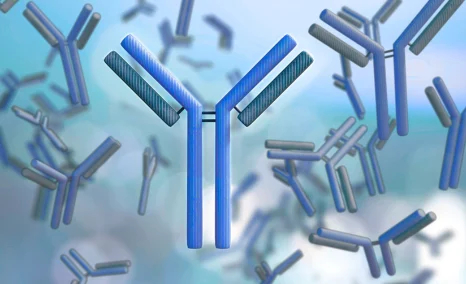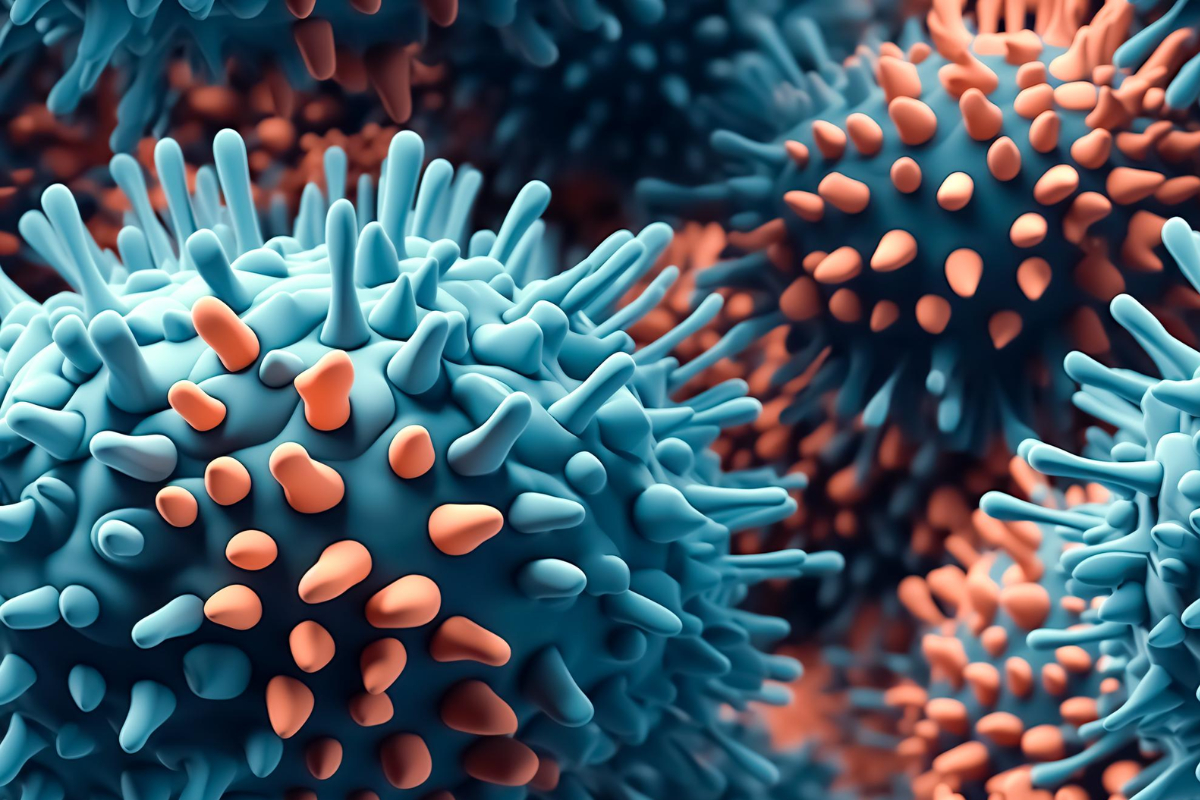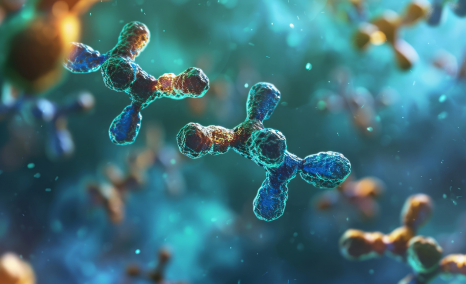5 Upcoming Bispecific & Trispecific Antibodies Beyond Oncology
Jun 10, 2025
Table of Contents
Imagine a world where treatment options are as precise as a scalpel and as adaptable as a chameleon. Bispecific antibodies are paving the way for this future, bringing revolutionary advancements in oncology and various therapeutic fields. By harnessing the power of these dual-targeting agents, researchers are unlocking new possibilities in treating complex diseases with unprecedented specificity and efficacy. Beyond their groundbreaking work in cancer, bispecific antibodies are making waves in autoimmune disorders, infectious diseases, and even rare genetic conditions, offering hope where conventional therapies fall short.
As we stand on the brink of this new frontier, bispecific antibodies promise to unlock unprecedented therapeutic possibilities, heralding a new era where treatment is more targeted and more effective. With each discovery and clinical trial, we’re inching closer to a new era of personalized medicine that promises not just to manage but to potentially cure some of the most challenging health conditions. The horizon is bursting with potential—are we ready to embrace it?
Downloads
Click Here To Get the Article in PDF
Recent Articles
- Bispecific and Trispecific Antibodies: Are They Better Than CAR-Ts?
- Transforming Multiple Myeloma Treatment: The Promise of Novel Drug Classes
- A New Era for Multiple Myeloma Treatment: Bispecific Antibodies Enter the Fray
- Aurinia’s Lupkynis for Lupus; FDA Fast Track Designation for Toripalimab; Wren Therapeutics...
- Unleashing the Potential: CD38 Directed Therapies Revolutionize Multiple Myeloma Treatment
5 Bispecific Antibodies on the Horizon Beyond Oncology
BsAbs have emerged as promising therapeutics against cancer indications. At present, cancer indications account for the majority of bispecific antibody development. The FDA has approved bispecific antibodies for cancer indications in addition to hemophilia A, diabetic macular edema, and neovascular (wet) age-related macular degeneration (AMD).
Most of the BsAbs are now being explored for cancer indications, although a limited number of BsAbs are also being developed for non-oncology indications. The key companies active in the non-oncology space include Provention Bio, Sanofi, AbbVie, AstraZeneca, MoonLake Immunotherapeutics, and IGM Biosciences. Here, let’s have a look at the 5 promising bispecific antibodies in the pipeline by these leading companies.
MoonLake Immunotherapeutics’ Sonelokimab
Sonelokimab is an experimental humanized tri-specific Nanobody binding with high affinity to IL-17A and IL-17F through two of its domains, effectively blocking the formation of IL-17A/A, IL-17A/F, and IL-17F/F dimers.
The company has finished a Phase II trial for sonelokimab to treat moderate-to-severe hidradenitis suppurativa and is now assessing the drug in two Phase III hidradenitis suppurativa clinical trial studies. The 24-week topline results were shared at the American Academy of Dermatology (AAD) 2024 annual meeting. This Phase III program follows MoonLake’s announcement in February 2024 of a positive outcome from end-of-Phase II discussions with the US FDA and favorable feedback from the EMA, which endorsed MoonLake’s plan for advancing to Phase III.
The Phase III VELA program will involve 800 patients across VELA-1 and VELA-2. This is the first Phase III study in hidradenitis suppurativa to use HiSCR75 as the primary endpoint. The company anticipates topline results for the primary endpoint of the Phase III VELA trial at Week 16, along with data on other endpoints, to be available by mid-2025. Delveinsight expects Sonelokimab’s launch in 2027 for moderate to severe HS, with more than USD 600 million opportunity in the US in 2034.
In early 2025, three new clinical trials were launched to expand the therapeutic potential of Nanobody® sonelokimab. These include the Phase III VELA-TEEN trial, which marks the first-ever clinical study dedicated to adolescent patients with moderate-to-severe hidradenitis suppurativa (HS). Additionally, the Phase II LEDA trial is evaluating sonelokimab for palmo-plantar pustulosis (PPP), while the Phase II S-OLARIS trial is assessing its efficacy in axial spondyloarthritis (axSpA).
While sonelokimab’s development is currently focused on HS and psoriatic arthritis (PsA), the company is actively expanding its research into additional dermatological and rheumatological conditions. These include adolescent HS, palmoplantar pustulosis (PPP), and axSpA, demonstrating a strong commitment to addressing unmet medical needs and broadening treatment options for patients.
AbbVie’s Lutikizumab
Lutikizumab (ABT-981) is an investigational drug with dual-variable domains that targets interleukin (IL) 1α and 1β. Its lead indication in Phase III trials is HS, followed by Phase II trials in Atopic Dermatitis (AD) and Ulcerative Colitis (UC). Research indicates that IL 1α and 1β levels are increased in hidradenitis suppurativa lesions. In January 2024, AbbVie announced Phase II results indicating that adults with moderate to severe hidradenitis suppurativa who had not responded to anti-TNF therapy showed better response rates when treated with lutikizumab (ABT-981) at doses of 300 mg every other week or 300 mg weekly, achieving 59.5 percent and 48.7 percent respectively, compared to 35.0 percent for placebo in the primary endpoint of achieving HS Clinical Response (HiSCR 50) at week 16. As a result, AbbVie moved lutikizumab into Phase III of its clinical development program for hidradenitis suppurativa.
Abbvie’s HUMIRA (including biosimilars) and Novartis’ COSENTYX are the only approved biologics in HS, where HUMIRA has been used for a decade, whereas COSENTYX received approval in 2023, which creates a lucrative opportunity for the emerging players as the moderate to severe category contributes roughly 45% of total HS prevalent population in the US.
Sanofi’s PRV-3279
Sanofi’s (acquired through Provention Bio’s acquisition) PRV-3279 is an investigational humanized bispecific DART molecule that targets the B-cell surface proteins CD32B and CD79B. PRV-3279 was initially being developed to intercept systemic lupus erythematosus (SLE), Additionally, PRV-3279 has the potential to prevent or reduce the immunogenicity of biotherapeutics, including gene therapy vectors and transgenes. Currently, Provention is evaluating PRV-3279 in the PREVAIL-2 study in SLE patients.
The PREVAIL-2 study is a Phase IIa proof-of-concept (POC) trial focused on moderate-to-severe SLE patients who respond to a brief course of corticosteroids and are then monitored for relapse after being randomized to receive either PRV-3279 or a placebo. The trial is being conducted in the US and Hong Kong, and screening is already underway in the US.
The goal is to identify and enroll around 100 patients, who will receive six monthly infusions of either PRV-3279 or a placebo, with the primary efficacy outcome measured at 24 weeks. In previous studies, PRV-3279 was well-tolerated, with Phase I trials (including the PREVAIL-1 study) demonstrating long-lasting inhibition of B cell function, evidenced by a reduction in IgM levels 8 weeks after the final dose. These findings, along with data showing that CD32B genetic variants are linked to SLE and that PRV-3279 inhibits B cells from SLE patients, justify further evaluation of SLE.
AstraZeneca’s MEDI-7352
MEDI7352 is a bi-specific fusion protein that targets both nerve growth factor (NGF) and tumor necrosis factor receptor 2 (TNFR2). This drug candidate, a new molecular entity (NME), was administered via intravenous or subcutaneous injection in clinical trials. MEDI7352 has completed a phase II development for painful diabetic neuropathy. However, no future plans have been reported by the company post-trial completion in 2023. As of January 2025, the product is in the phase II stage for both osteoarthritis and diabetic neuropathic pain
AstraZeneca’s AZD1163
AstraZeneca’s novel anti-PAD2/4 bispecific antibody, AZD1163, is an early-stage asset being developed through phage display technology and shows a strong binding affinity for recombinant human PAD2 and PAD4. As per AstraZeneca’s pipeline, AZD1163 is being evaluated for Rheumatoid Arthritis. In studies with non-human primates, a single dose of 5 mg/kg of AZD1163 led to a prolonged reduction in PAD activity for eight weeks, even in samples with high PAD4 levels similar to those in some rheumatoid arthritis patients’ serum.
Currently, AstraZeneca is evaluating this bispecific antibody in a Phase I trial (NCT06103877; Recruiting), with initial data expected in 2025. The study aims to assess the safety and tolerability of AZD1163 when given intravenously and subcutaneously to healthy participants.
What Lies Ahead for Bispecific Antibodies Beyond Oncology
As the spotlight on bispecific antibodies has traditionally shone brightly on oncology, the future promises an even more expansive horizon for these innovative therapeutics. With their unique ability to target two different antigens simultaneously, bispecific antibodies are poised to revolutionize treatment paradigms across a spectrum of diseases. Beyond cancer, these tailored therapies are making strides in autoimmune disorders, where they could potentially reprogram the immune system to halt destructive inflammation. Imagine a world where conditions like rheumatoid arthritis and multiple sclerosis are managed with precision therapies that address multiple disease mechanisms at once.
Additionally, bispecific antibodies hold the key to advancing treatments in infectious diseases, including chronic viral infections and emerging pathogens. By harnessing their dual-targeting capability, researchers are developing next-generation treatments that could neutralize complex viral infections more effectively than ever before. As we venture into this new era, the potential applications of bispecific antibodies could reshape the landscape of medicine, offering hope and innovative solutions for a range of unmet medical needs.

Frequently Asked Questions
Some promising bispecifics beyond cancer include MoonLake’s Sonelokimab for hidradenitis suppurativa (HS), AbbVie’s Lutikizumab (ABT-981) targeting IL-1α/β for HS and other inflammatory conditions, Sanofi/Provention’s PRV-3279 for systemic lupus erythematosus (SLE), AstraZeneca’s MEDI-7352 for painful diabetic neuropathy and osteoarthritis, and AZD1163 targeting PAD2/PAD4 for rheumatoid arthritis.
Sonelokimab has completed Phase II trials in moderate-to-severe HS, and has moved into two Phase III studies (VELA-1, VELA-2). Early data include positive topline results and regulatory feedback in both the U.S. and Europe. It is expected to capture a significant market for HS if successful.
Lutikizumab is a dual-variable domain bispecific antibody that targets IL-1α and IL-1β. It has shown improved response rates in moderate-to-severe HS patients who did not respond to anti-TNF therapy in Phase II, and has advanced into Phase III trials. This suggests strong potential in inflammatory skin diseases.
These bispecific antibodies are being tested in various routes (intravenous or subcutaneous) and have so far displayed tolerable safety profiles in early studies. For example, PRV-3279 in SLE had acceptable tolerability and showed long-lasting inhibition of B-cell activity. Nonetheless, as with any biologic targeting the immune system, monitoring for off-target effects, immunogenicity, or dose-related adverse events remains critical.
If clinical trials succeed, the pipeline could significantly expand treatment options in autoimmune and inflammatory diseases. Sonelokimab, for instance, is expected to launch around 2027, with a large U.S. market opportunity projected for HS. The expanding field of bispecifics beyond oncology reflects both unmet need and growing investment. However, commercialization will depend on trial outcomes, regulatory approvals, and pricing/reimbursement dynamics.
Downloads
Article in PDF
Recent Articles
- 8 Emerging Bispecific Antibodies Transforming NSCLC Treatment
- Systemic Lupus Erythematosus: An autoimmune disease
- Novartis Cosentyx: First Biologic Hidradenitis Suppurativa Treatment After Almost Ten Years
- HUTCHMED’s NDA Submission to FDA for Fruquintinib; Cytokinetics to Discontinue ALS Drug Candidate...
- Lupus Nephritis: A SILENT but SEVERE Systemic Lupus Erythematosus Manifestation



